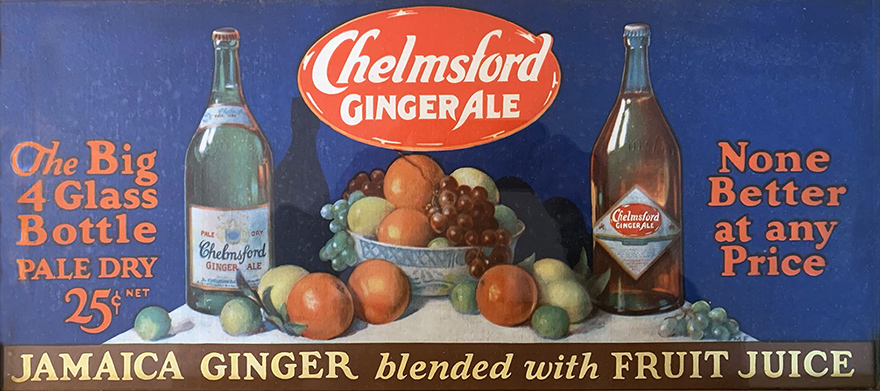
C George Armstrong, a native of Ontario, Canada, came to Chelmsford to work for John Byfield as a salesman for the company's products. George's sister Sarah Jane "Jennie" Armstrong was John's wife.
The image below shows the complete destruction of the two-story mill, with the foreground path leading to Littleton Road, and the chimney still standing in the right rear near the railroad tracks.

Returning to New Brunswick, Canada, after the fire, George Armstrong founded the Sussex Ginger Ale Company with business partner Simeon H White.
George Armstrong returned to Chelmsford with business partner Simeon White and constructed a new building with a lower story of brick and a second story of wood to house the Sussex Mineral Spring Company, a subsidiary of Sussex Ginger Ale.
The image below shows the wooden second floor of the new building under construction beyond the tree at left, and the Town Hall tower above the building to the right of the smokestack. There are building materials on the loading dock next to the railroad tracks.

The business soon became independent of Sussex (which continued in Canada) and was renamed the Chelmsford Spring Company. The spring the company was named after was located at the base of Robin’s Hill at 101-High Street, and its water was piped about 0.8 miles down the hill from the source and along the bed of the railroad tracks to the plant.
The image below shows the "never failing" source of water located at 101-High Street, which runs behind the stone wall in the background. The source was filled in with concrete after it was no longer needed, but water still flows out of the ground among the rocks. The Jagged Rock Road subdivision is now located beyond the apple tree.
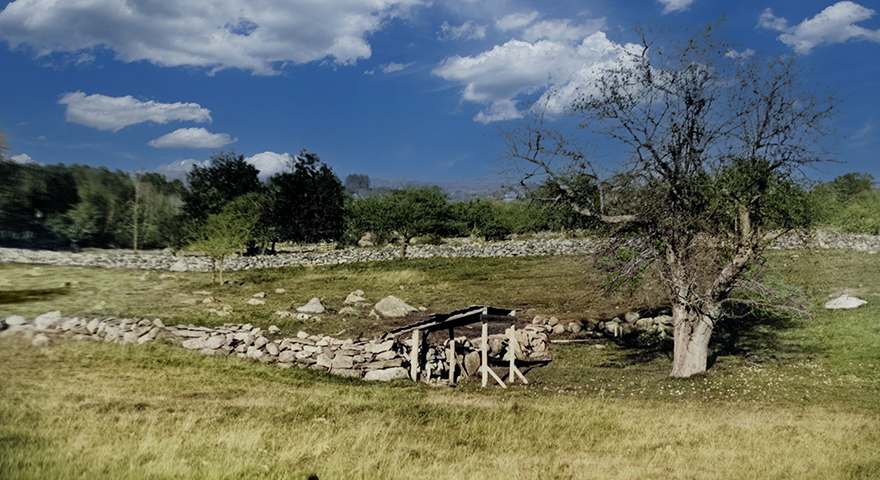
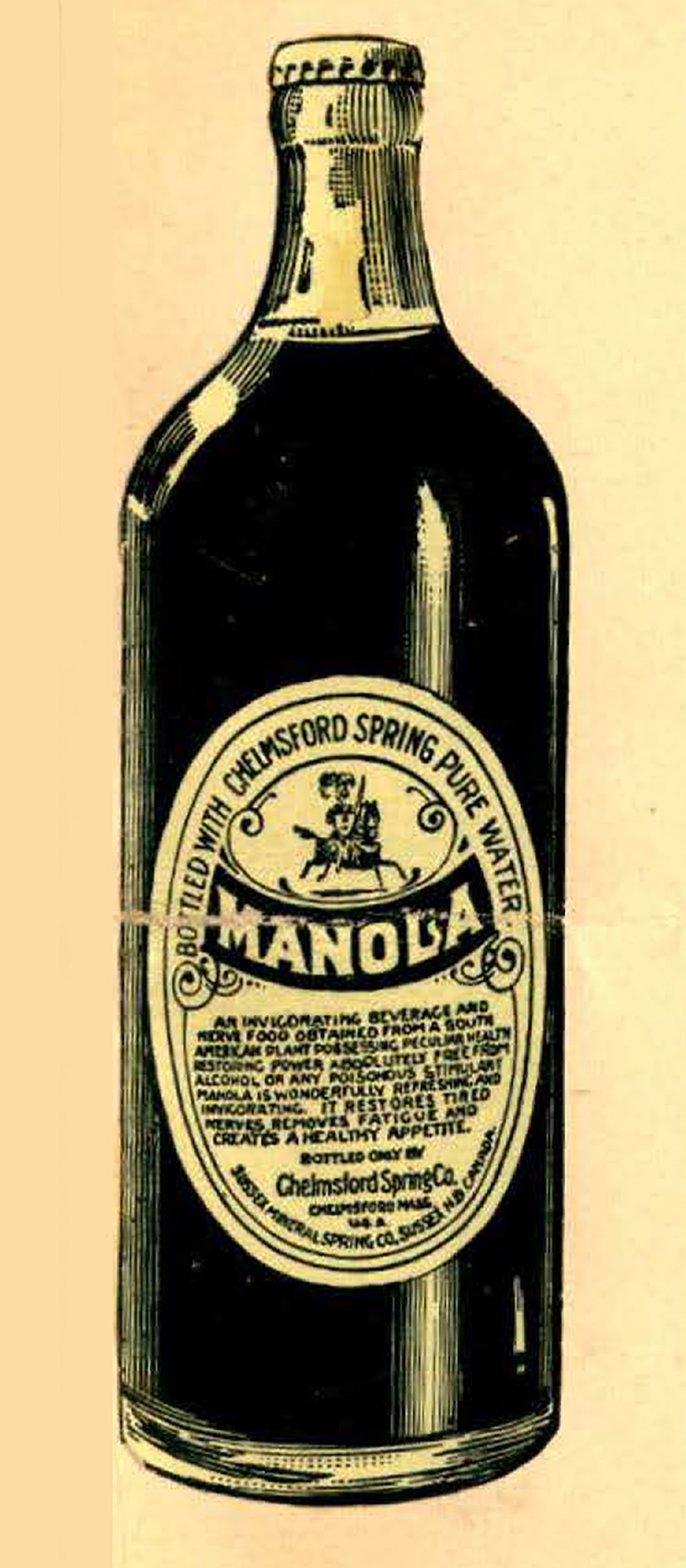
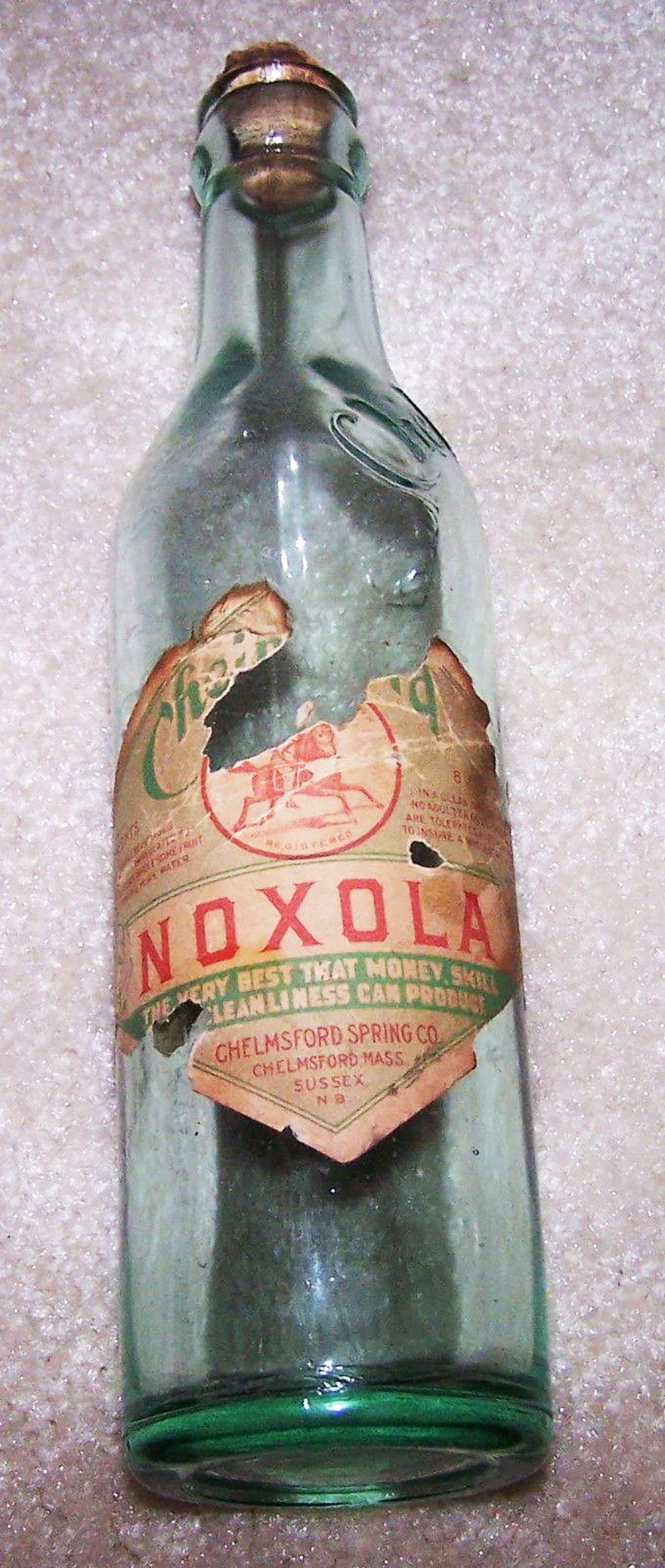
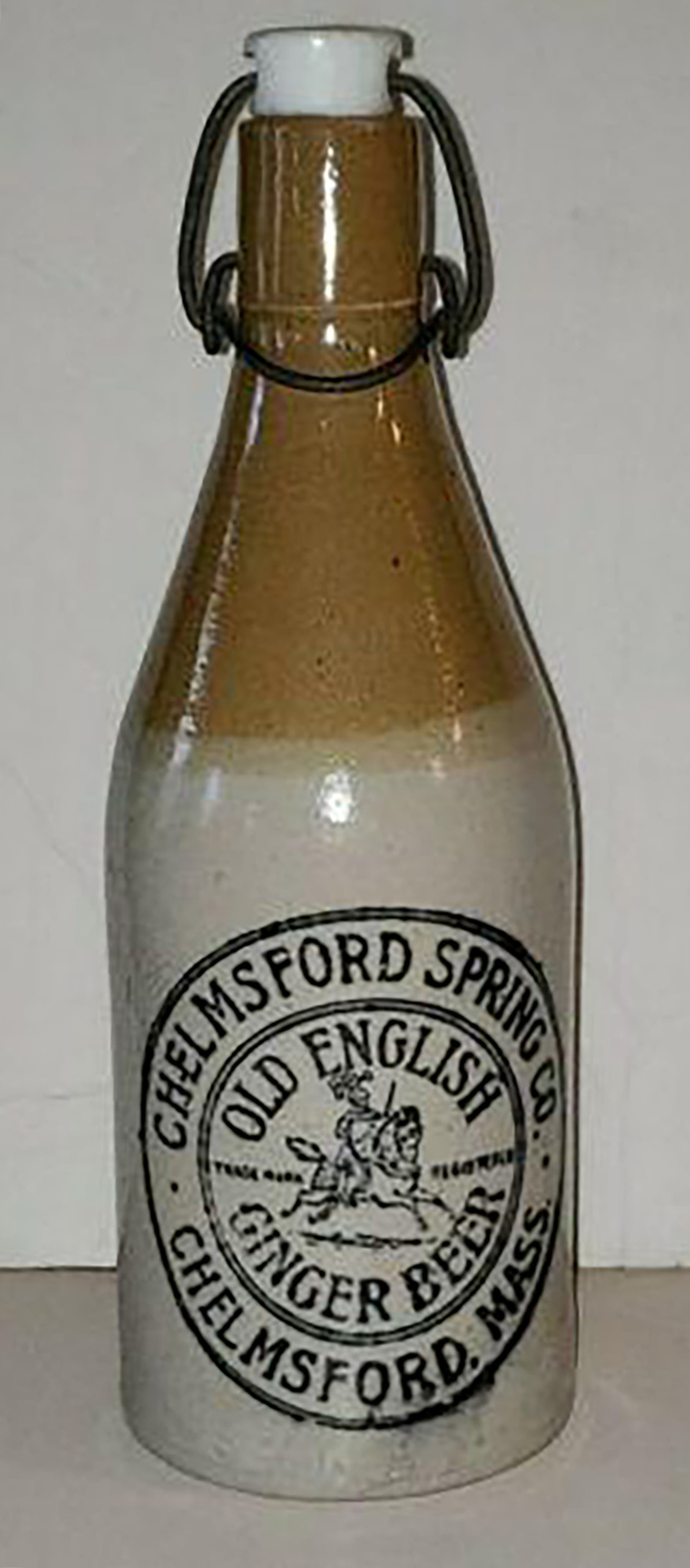
Manola - Initially, the company produced various flavors, and one of its notable creations was a patent medicine called Manola. Manola bottles with paper labels are extremely rare, but they stated: "An invigorating beverage and nerve food obtained from a South American plant possessing peculiar health-restoring power. Absolutely free from alcohol or any poisonous stimulant."
Noxola - The surviving label for this flavor claims: "the very best that money, skill, and cleanliness can produce." And: "Chelmsford Spring Beverages are made of best quality granulated sugar, high grade fruit flavors, wholesome fruit acids and Chelmsford Spring pure water." This label also indicates the Chelmsford Spring Company is located in both Chelmsford, Mass, and Sussex, New Brunswick.
Old English Ginger Beer - This was the most popular product in these early years and was sold in stoneware bottles imported from England. Ginger beer was cloudy and up to 11% alcohol content, was brewed from ginger, sugar, water, and a culture of bacteria and yeast called "ginger beer plant," and fermented for several days. It did not age well outside of stoneware bottles.
No law was found specifically banning use of stoneware containers, but inspection and sterilization were a problem for the bottler, and carbonated beverages were catching on with the public. Prohibition finished off ginger beer production in the US, but it remained popular in Canada and England.
After dropping ginger beer and patent medicine products, the Chelmsford Spring Company produced carbonated drinks such as Ginger Ale, Lemon, Orange, Sarsaparilla, Vanilla, and an unfamiliar flavor called Tally Ho.
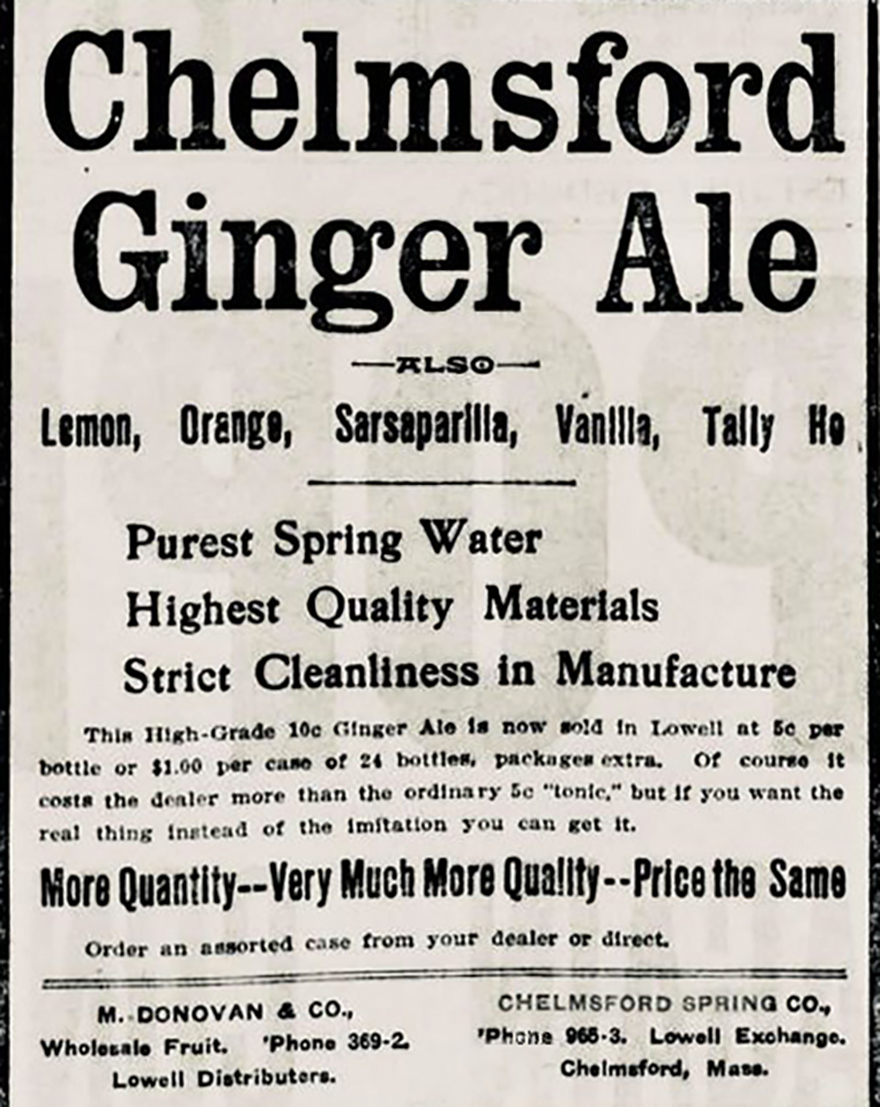
Mr Armstrong incorporated as the Chelmsford Ginger Ale Company.
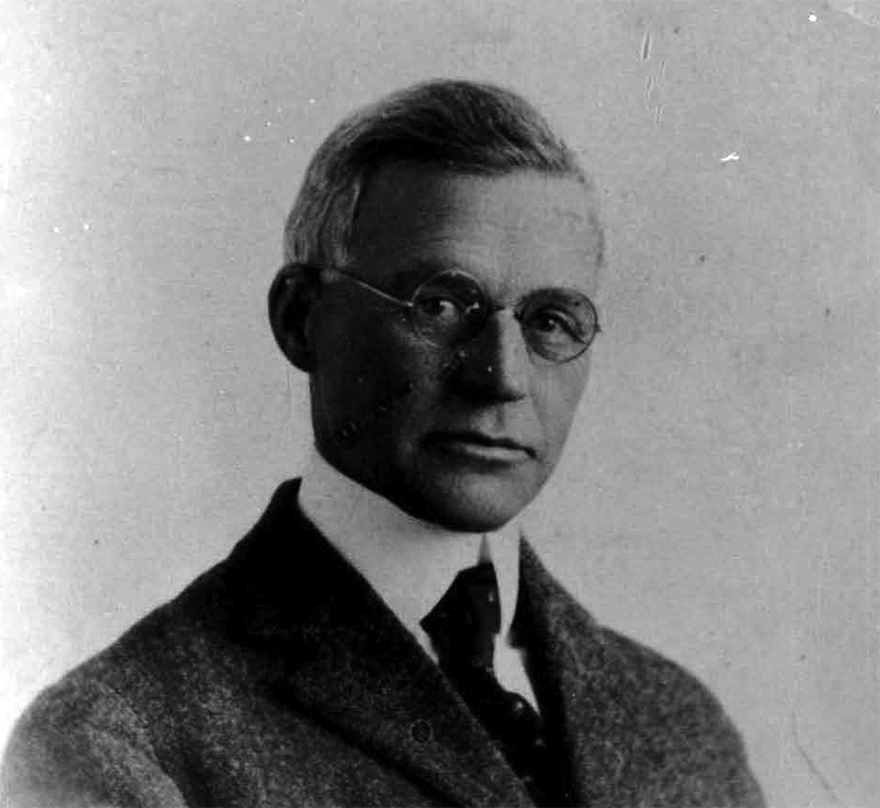
Three weeks later (December 12) the surviving ell was being used to continue bottling operations and the offices were temporarily moved to the Odd Fellows Hall. Construction began on a new fire-proof building using steel, cement, asbestos, and glass.
This parcel was adjacent to the west end of the Ginger Ale property, extending it westward by 52 feet.
In October the bottling machinery was transferred to the new building and the old ell torn down to make way for the new section running parallel to the railroad tracks.
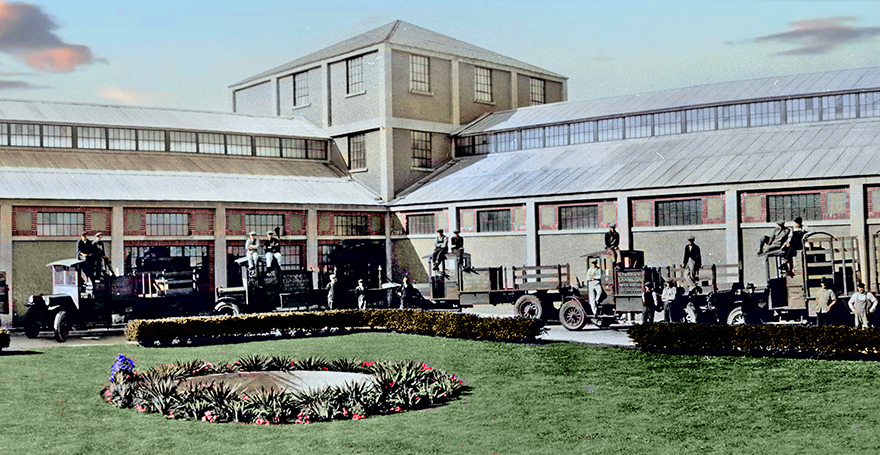
Efforts by George Armstrong and others led to the formation of the Chelmsford Water District this year.
A concrete water reservoir was constructed on Robins Hill and piped to a pumping station at 63 Warren Avenue. Both are seen here under construction.
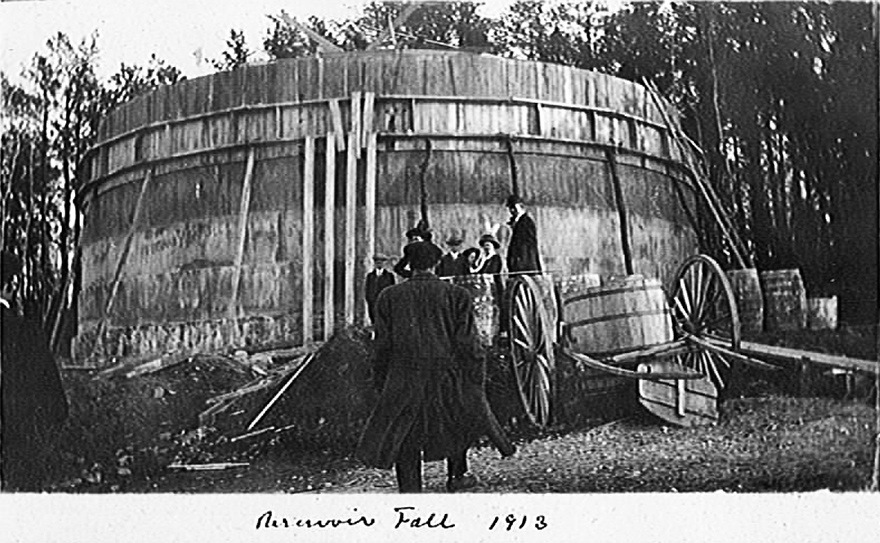
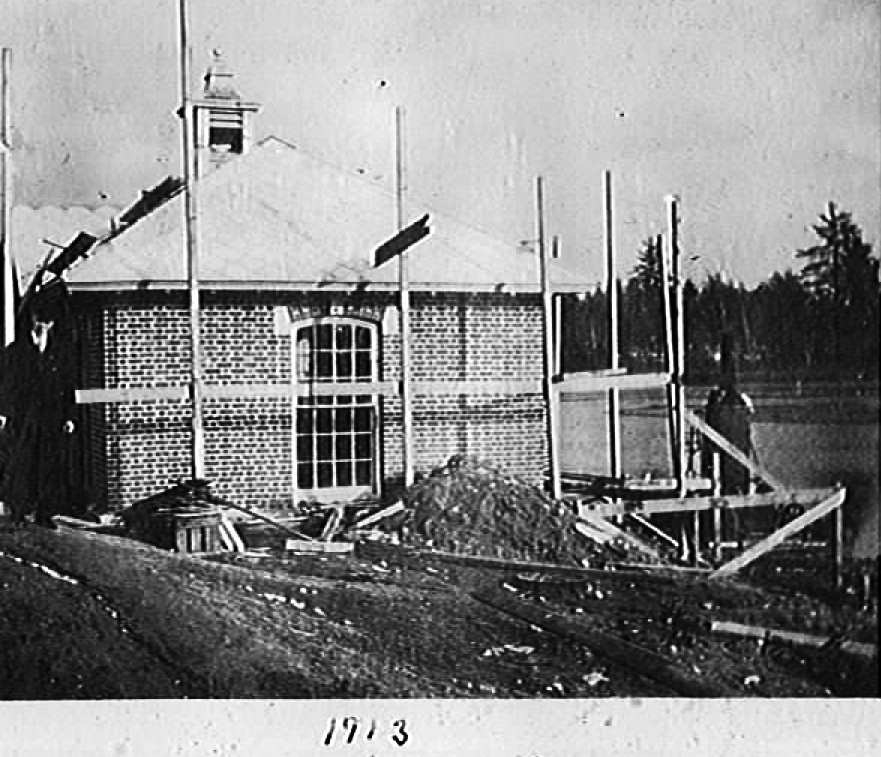
This purchase extended the Ginger Ale property eastward to the railroad station property, and included three existing buildings: the historic multi-family "Railroad House" moved here in 1872 to make room for the railroad station, and two cottages occupying a triangular lot next to the Ginger Ale bottling plant.
The image below shows the garage as it looked in 1923 with four company vehicles in front.
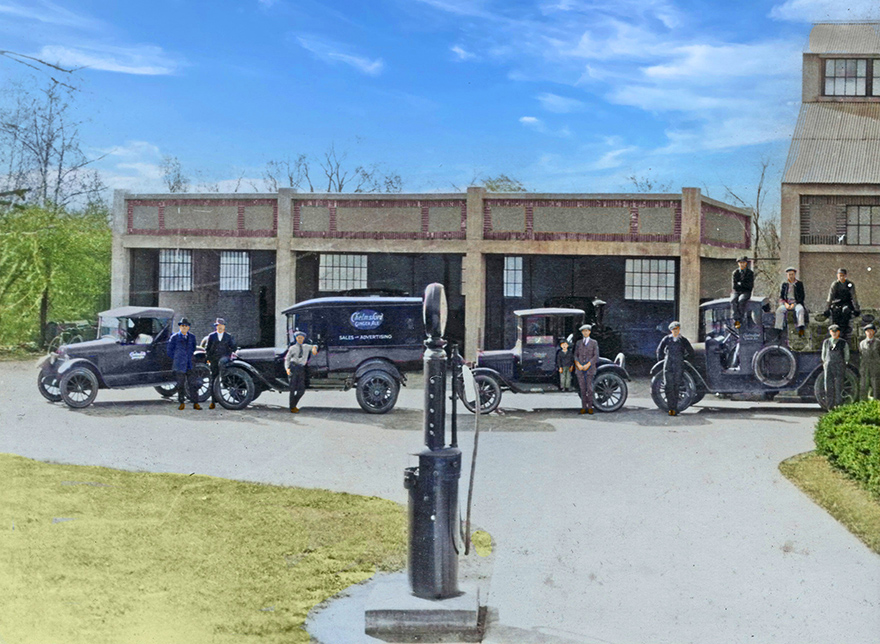
This purchase extended the Ginger Ale property westward by another 52 feet.
C George Armstrong purchased a 0.39 acre parcel, the third lot from the west end of the Ginger Ale property, from Ida B and Areminta V Paasche on August 21 (deed 688/458).
This purchase extended his property 40 feet westward on Littleton Road and 130 feet along the railroad tracks.
The same day - The Chelmsford Company purchased the original John Byfield parcel, now containing the bottling plant, from C George Armstrong (deed 738/441).
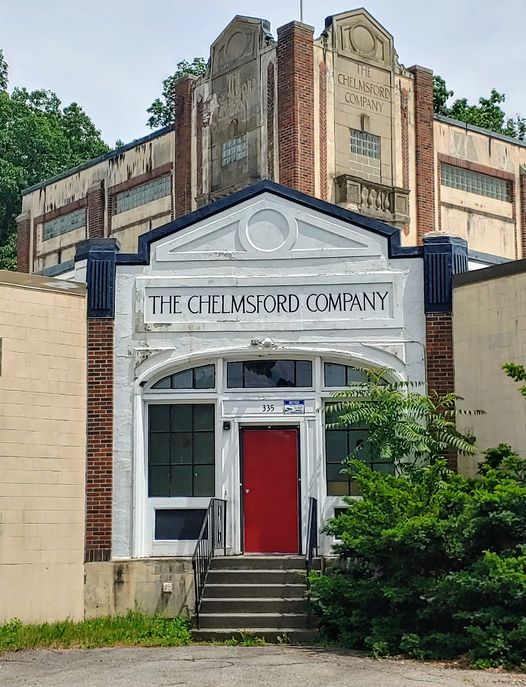
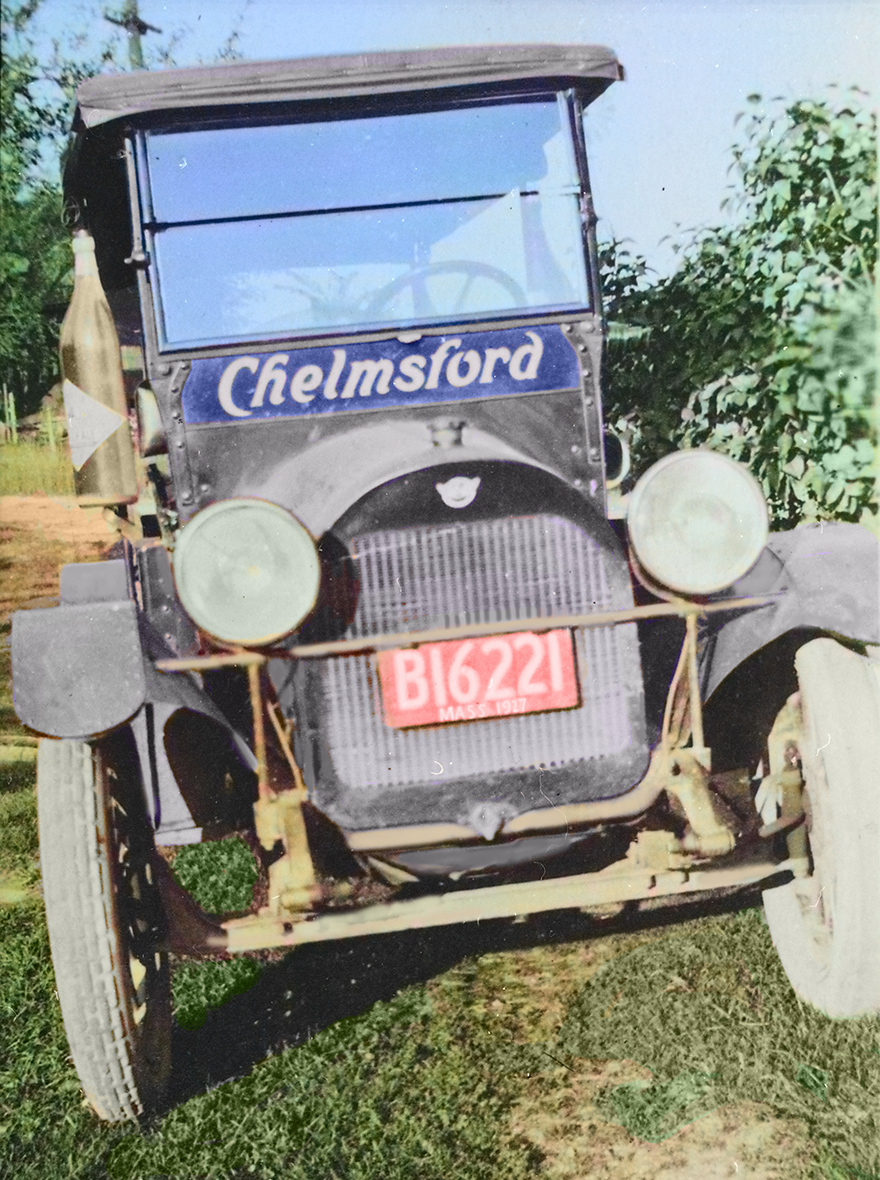
Back to Chelmsford, an office was built as a separate building, with an arched concrete and brick capstone with an embedded company logo above the center window.
The Chelmsford Company purchased the parcel located between the east end of the Ginger Ale bottling plant and the railroad station property from Mary H Armstrong on July 14 (deed 764/359).
The Chelmsford Company purchased the southernmost 40 feet of the former E Belle Adams property, about 0.05 acres, for loading dock convenience from C George Armstrong on December 8 (deed 771/142).
The Chelmsford Company incorporated as Chelmsford Ginger Ale, Inc, of Delaware on December 18.
George Armstrong stayed on as a director of Canada Dry.
This image shows the office building in use by Canada Dry in the 1940s.
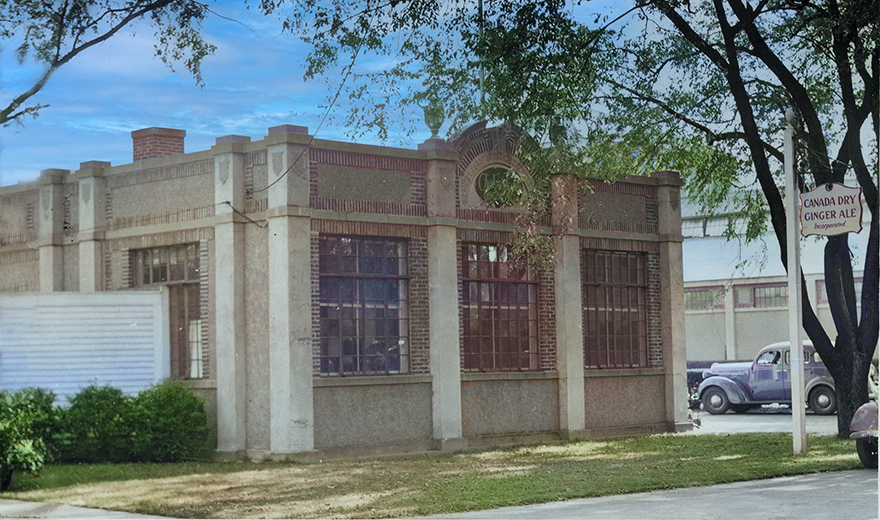
While changing their state of incorporation, Canada Dry Ginger Ale, Inc, of Delaware purchased the four parcels of land on Littleton Road owned by Canada Dry Ginger Ale, Inc, of Virginia on November 2 (deed 899/544).
Historic 'Railroad Block,' Office Building, and Two Cottages to be Suppl[a]nted by Modern Structures
Plans for extensive alterations and additions to the Chelmsford Ginger Ale plant in Littleton street, now owned by the Canada Dry Co of New York, are rapidly being put in shape it is understood and will within a short time be offered to contractors for bids. For some time the rapid growth of the business has called for more space and the contemplated move will make it possible to double the output.
Sweeping changes in the present plant will be made, according to plans, calling for the removal of the grass plot, fountain and hedge between the double entrance, the razing of the present brick office building, two cottages [seen below] and what is known as the "Railroad block."
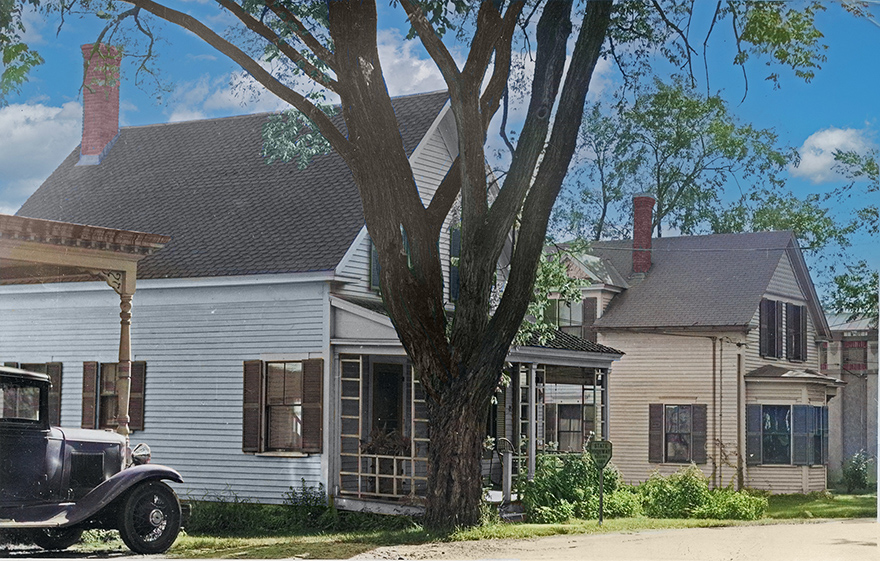
All space so cleared will be covered with plant buildings, the office to be located at the east end, paralleling the railroad tracks. A brick wall will be built along the entire length of the Littleton street side and the new entrance will be at the east end of the property along the line of the railroad land. The holdings of the company are from the railroad line to the property of Herbert H Fish in Littleton street.
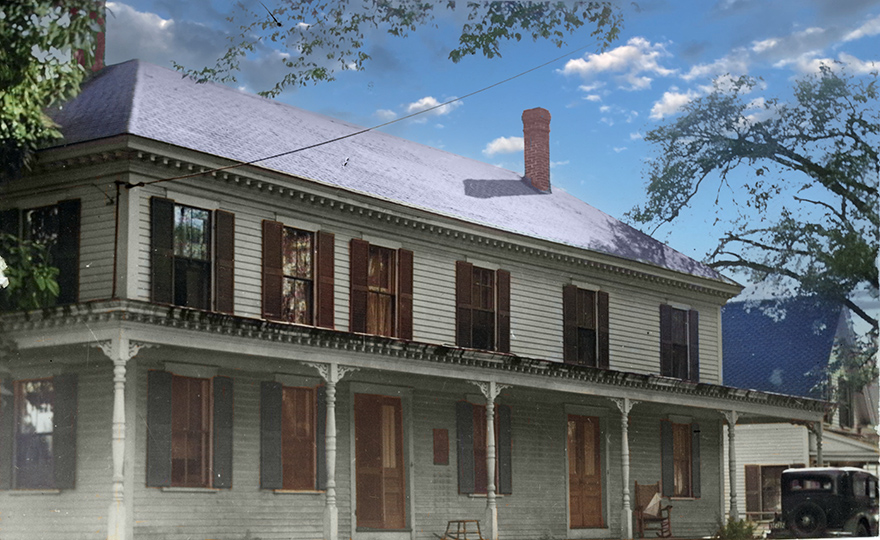
By the removal of the so-called "Railroad block," [seen above] the town will lose one of its most historic buildings. According to the late Rev Wilson Waters, D D, in his History of Chelmsford, the building was presumably built by the town in 1677 as the home for Rev Thomas Clarke, the second minister in the town of Chelmsford, and as a parsonage was probably occupied later by his successors in the ministry, Rev Samson Stoddard and Rev Ebenezer Bridge.
Lined With Plank - According to Mr Waters, "the building originally stood on the site of the present passenger depot and was removed to its present location upon Littleton road, when the railroad was put through the village in 1872. The house has been enlarged by the addition of a wing facing upon Littleton road. The old part facing east corresponds in width and height to the house built for Mr Clarke, although now somewhat longer. When the house was remodelled between 25 and 30 years ago, the walls of one room were found lined with plank."
[Also from Mr Waters] "... five families were assigned to Mr Thomas Clarke's house, besides his own. The meaning of this is that these families were to resort to his house for safety, in case of Indian attack. This fact explalns the object of the plank lining found in the walls of the house and supports the belief that it is the identical house built by the town for Rev Mr Clarke ..."
The never-failing spring at 101-High Street, so long a factor in the good reputation of the drink, was filled in for safety’s sake.
Leo Kahn of Malden, the founder of Purity Food Stores, purchased the Littleton Road land and buildings from Canada Dry Corporation of Delaware on June 22 (deed 1443/557).
On the same day - James Mawn and Mary Negri as trustees of CLM Realty Trust executed an Indenture of Lease with Leo Kahn of Chelmsford and Albert S Kahn of Newton (68/95, Notice of Lease 11381).
Under the terms of this lease Leo Kahn was named as Landlord and his older brother Albert Kahn was named Tenant. The premises was divided into two seperate spaces, one refered to as "Office Space" and he other as "Produce House" which lies southwesterly of the building containing the office space and warehouse. The term of this lease commenced on May 31st, 1963 continuing to May 31st, 1973. The Tenant had an option to extend the Produce House lease for another 10 years.
The US Government and Diggins and Rose Moving Company later used the building for storage.
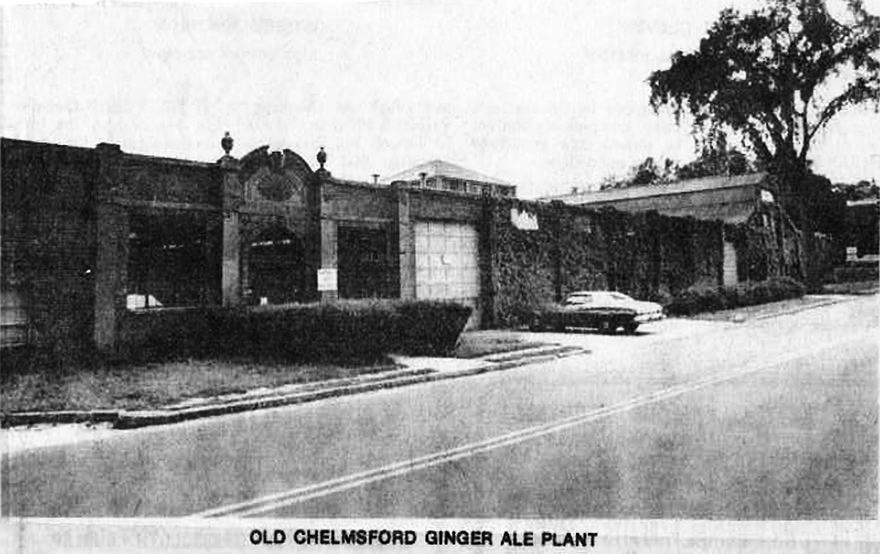
The Central Square Mill Pond to the right of the railroad tracks was filled in by the 1950s and is occupied here by the State Line Lumber Company at 11-Cushing Place.
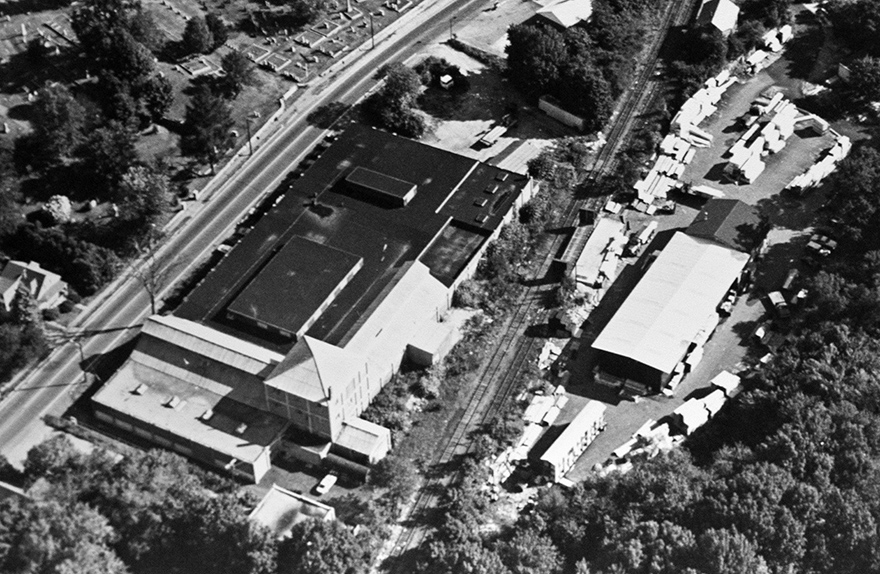
The same year - The Coca-Cola Company purchased Cadbury Schwepps along with its Canada Dry subsidiary and formula for making Chelmsford Ginger Ale.
Production of Chelmsford Ginger Ale was assigned to the Coca-Cola Bottling plant in Londonderry, NH. Production was limited to 2-liter bottles, and distributed to the local Coca-Cola distribution area in New Hampshire plus northeastern Massachusetts east to Cape Ann, south to Concord, and west to Fitchburg.
By CHRISTOPHER SCOTT, Sun Staff
CHELMSFORD - Ginger ale and Chelmsford. Since the turn of the century, the two have been synonymous. But later this year, that relationship - in which many local historians and residents take a great deal of pride - will all but cease to exist.
Representatives at a special Town Meeting last Monday overwhelmingly approved a rezoning proposal that will allow the owner of the Chelmsford Ginger Ale Co building to raze the vacant brick structure on Littleton Road to make way for an office building. Local historians and former company workers expressed varying views on the redevelopment project.
George Adams Parkhurst, the town's dean of historians, said if he had "a billion dollars he would buy the building ... "I'm disgusted by what is going to happen," Parkhurst said in an interview last week. "What they want to put up there is a big improvement over what's there now, but it's still sad."
Bernie Ready, a member of the Chelmsford Historical Society, told Town Meeting he regretted the loss of the landmark, but urged the representatives to approve the rezoning because it is business and will bring in needed tax revenues. Ready also expressed hope that the owner and developer of the site, CLM Realty Trust of Woburn, can preserve some portion of the structure.
James Geary, lawyer for CLM trustee James Mawn, said his client is hoping to include in the new structure the large piece of granite above the main entrance inscribed with the words "Chelmsford Ginger Ale Co." Mawn, who is also a lawyer, bought the ginger ale plant 30 years ago, and has used it as a warehouse to store rubber, furniture, stereo equipment and groceries.
Even if the stone is preserved, former employees of the company, established in 1901 by Canadian immigrant C George Armstrong, are still saddened. "I just hate to see it go," said Jeanette Pepin, a Lowell resident who worked as a company clerk from 1930 to 1959. "It's such a piece of local history; the town must really hate it."
Pepin, whose sister Ruth also worked at the plant, recalls the plant's friendly atmosphere and fine working conditions. After the company was purchased by Canada Dry Co of Waltham in 19[31] for $6 million, Pepin recalls how company brass looked forward to coming to the Chelmsford plant before it closed in 1959. "They called it the country club," Pepin said. "They always looked forward to coming to the country club."
For Tyngsboro resident Thaddeus Zabierek, who worked on the plant's production line for brief periods before and after World War II, The Chelmsford Ginger Ale Co kept him and other family members from going hungry.
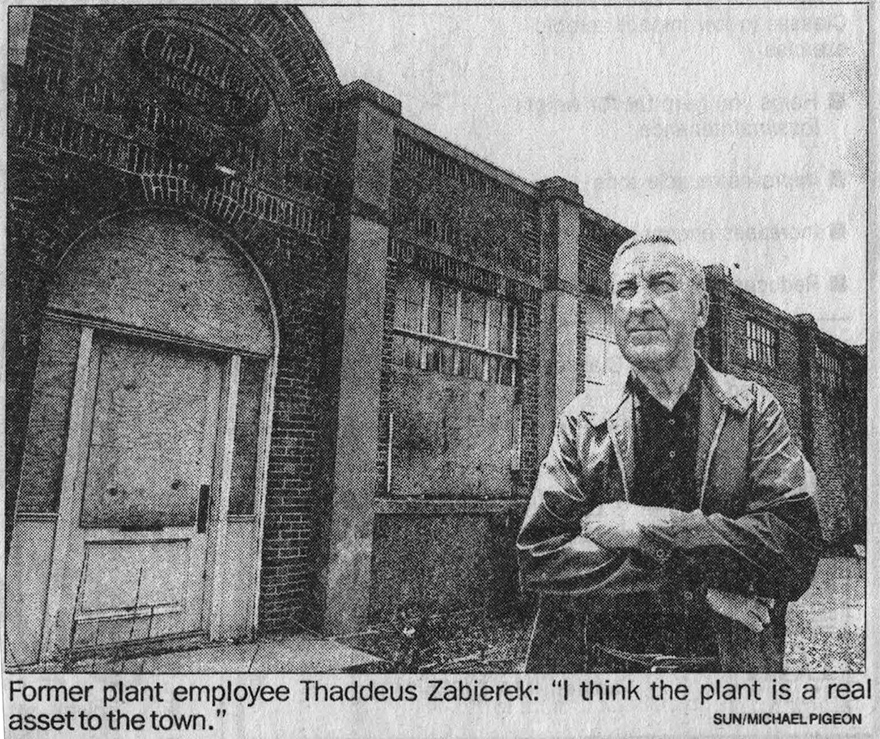
Zabierek's late father, Walter, worked at the plant through the Great Depression, when regular work was hard to come by. "He made $16.54 a week stacking the cases of ginger ale. In those days, it wasn't how much you'd earn, all that mattered was that you were earning something," Thaddeus recalled. "When I heard about what's going to happen to the building, I thought it was kind of rough. I think that building is a real asset to the town," he said.
Others also wish there was a way to preserve the building. "It's sad the plant is being torn down because it means so much to so many people," said Richard Lahue, a former member of the Historical Commission and the Historic District Commission. "I just wish there was something that could be done to save it."
Geary and Mawn said planners and architects did study the feasibility of preserving the building. They determined it couldn't be done because the building occupies about 60,000 square feet on the 78,000-square-foot lot. If the building had been preserved, there wouldn't be enough space left for parking. The structure Mawn plans to build will contain 20,000 square feet. Although Town Meeting approved the rezoning, CLM Realty Trust still needs a couple of Planning Board permits before construction can begin. Because the Planning Board supported the rezoning, the necessary permits are expected to be issued.
CHELMSFORD - Ask any old timer here what sets their town apart and they are apt to offer you an ice-cold glass of ginger ale. Chelmsford Golden Ginger Ale, that is.
Sip it, warns Dick Lahue, because a gulp by the uninitiated will provoke that same burning reaction brought on by inhaling cigar smoke or chomping a Louisiana hot pepper.
Treat it with respect, advises Leo Healy, and you'll be rewarded with a thirst-quenching sensation that could forever change your opinion of flavored carbonated water. "Chelmsford Golden Ginger Ale is the original," said Healy as he deftly hefted two two-liter bottles into his shopping cart at the Route 110 Market Basket on a recent Saturday morning. "It's the same taste I remember when I was a kid growing up in Lowell. It hasn't changed all these many years, and no matter whatever else me and the wife drink we always keep Chelmsford around."
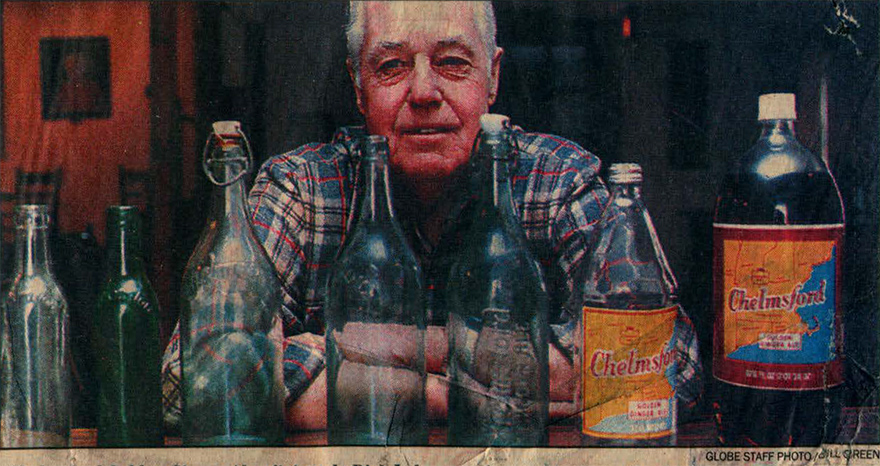
Now bottled by Coca-Cola at its Londonderry, NH, facility, the pungently aromatic drink has demonstrated such a remarkable staying power in a notoriously fickle business that not even industry experts from independent consultants to competitors can explain the longevity of its success. In the last two years alone, several hundred new soft drink flavors have been introduced from Clearly Canadian's Western Loganberry to Canada Dry's Cranberry Ginger Ale, all vying for a share of the lucrative $47 million market, according to Hellen Berry, a consultant with Beverage marketing Corporation in New York. Most will be discontinued with little notice from the general public.
And yet, Chelmsford's sales remain remarkably stable even if it represents the smallest portion of Coke's overall sales in this region, according to Larry Lordi, vice president of Coca-Cola Bottling Co of Northern New England. And the trend toward beverages made with natural flavors and less sugar could reinvigorate Chelmsford's sales, Lordi said.
"Chelmsford Golden Ginger Ale is now a niche product for us accounting for no more than 2 percent of all ginger ale sales," said Lordi in a telephone interview from his Bedford, NH, office. "But with the recent success of the new flavored ginger ales, the cranberries, the rasperries and the lemons, we've been toying with the idea of expanding the distribution of Chelmsford throughout Maine, for starters. It really depends on how much excitement we think we can generate. We're evaluating that now."
Introduced here in 1901 by a Canadian entrepreneur, Chelmsford Golden Ginger Ale is still made from the same 100-year-old formula that relies on the extract of Jamaican ginger root for its bite instead of less expensive capsicum pepper, according to Bill Tiernan, who manages the formula for the Canada Dry Corporation. Canada Dry still holds the patent on Chelmsford Golden after buying out the Chelmsford Ginger Ale Co from its original founder, C George Armstrong, in 1931.
When Canada Dry went out of the soda bottling business in the mid-'80s, we struck a deal with Coke to bottle and distribute all of our products, including Chelmsford Golden," Tiernan said. "We still make the soda's syrup at our extract plant in St Louis and then ship it to Coke in Londonderry where they add the sugar and carbonated water."
While production has been limited to two-liter bottles since Coke took over distributing the product, the bottle label still shows a map of the six New England states with the word "Chelmsford" emblazoned in large type running from the New York border out over the Atlantic Ocean.
Lordi at Coke said he developed a quick appreciation for the fanatical brand loyalty that customers exhibit toward Chelmsford Golden when he tried to discontinue it while manager of Coke's Seabrook disbibution center five years ago. "There was such a screaming from customers when we stopped stocking it there, I never want to live through that again," Lordi said. "I can assure you no matter how minuscule the sales of Chelmsford are compared to Coke or even the more popular pale ginger ales, we have no plans, absolutely no plans, of discontinuing the line," Lordi said.
Because of the way Coca-Cola divides its sales territories, Chelmsford fans can only find their tonic with its familiar yellow-and-tan label in major super markets in the northern Massachusetts territory that extends out to Cape Ann on the East, south to Concord, west to Fitchburg and then into the southern New Hampshire communities served by Lordi's Coca-Cola disttibution franchise. This division of responsibility also means Chelmsford is no longer available in the Boston and Worcester mrarkets that helped account for the company's phenomenal growth and success prior to World War II.
By 1922 the company had broadened its offerings to include a range of popular soda flavors and had outgrown its factory on Littleton Road. When it opened a new bottling plant in Shrewsbury in 1928, the company was producing 8,000 cases of tonic a day and was shipping them throughout New England.
"I can remember when Chelmsford was the dominant player in the New England soft-drink market at the time when ginger ales accounted for more than 50 percent of all soft drink sales," said Denis Crowley, treasurer for the Polar Corp in Worcester. "Not only were ginger ales the leading sellers, golden ginger ale outsold the pales more than 2 to 1."
Though colas are nationally the most popular soft drink, New England has remained ginger ale territory, particularly among mature customers, Crowley said.
Polar still sells its own version of golden ginger ale throughout its New England market and in New York, Crowley said, using a formula based on African ginger root that was imported from Belfast, Ireland, in 1884. "In fact, sales increased 20 percent last year when we dug out the 1920s-era label featuring the growling bears and then added a gold base cap," Crowley said.
The Bertucci's Brick Oven Pizzaria end of the Plaza is seen below along with the clock tower in the middle section.
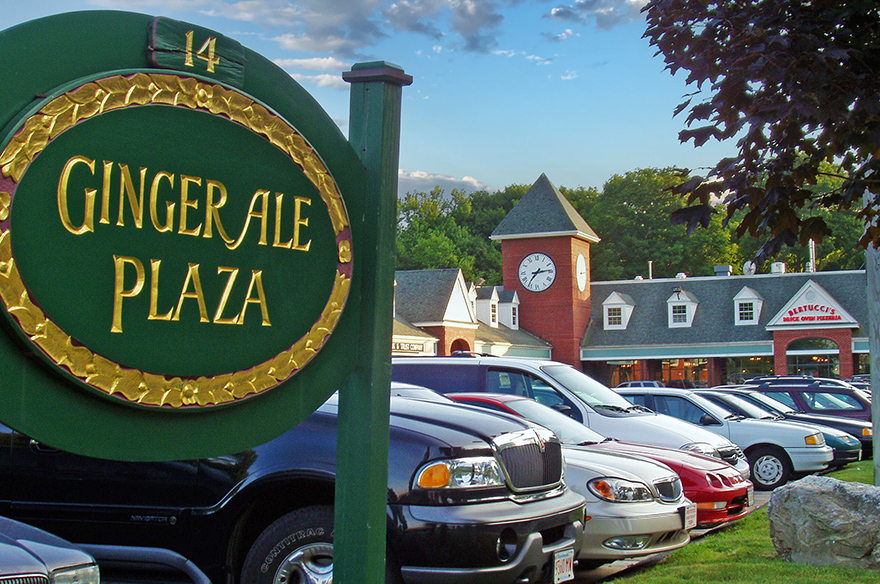
Chelmsford Is All About Its Golden Ginger Ale
By Sara Morrison
Tour Market Basket’s soda aisle and you’ll find two varieties of store brand ginger ale: regular old "Ginger Ale," and something called "Chelmsford Golden Ginger Ale," complete with a graphic of New England that makes it stand out from Market Basket’s otherwise plain labeling scheme. What exactly is Chelmsford Golden Ginger Ale? Like most things Massachusetts, there’s a bit of history behind the name. And an extremely loyal fanbase ...
“At one time, Chelmsford Ginger Ale was equal to Coca-Cola," said Bernie Ready, former president of the Chelmsford Historical Society. “They covered all of New England. They had billboards everywhere." Canada Dry bought the company in 1931, and continued making Chelmsford Golden Ginger Ale using the original recipe until 2003, when it was discontinued.
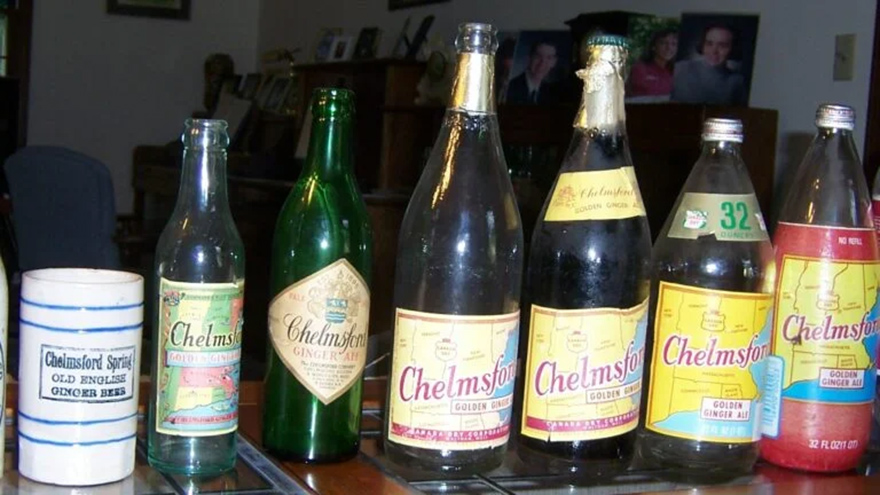
That’s where Market Basket came in. Joe Garon, beverage buyer for the grocery chain, said that customers wanted their Chelmsford Ginger Ale back. So Polar, which makes Market Basket’s store brand sodas, bought the Chelmsford label. Polar didn’t buy the formula, but instead did its best to approximate the recipe.
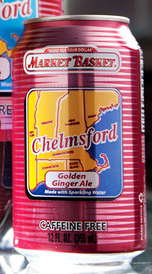
But it wasn’t close enough. According to the town historical commission’s History of Chelmsford 1910-1970, Ready complained to a local paper about the new Chelmsford Ginger Ale, saying: “if you could get the formula back (from Schweppes, which bought Canada Dry in the 80s) you would be a hero. They would have a bust of you in Chelmsford Center."
Polar never got the formula, but it did send its master brewer to Chelmsford to try to figure it out. Ready found two bottles of the original flavor in his father’s house for the brewer to try, so he would know what the real thing tasted like.
“They improved it significantly, but it’s not what it once was," said Ready, who collects Chelmsford Golden Ginger Ale bottles (stone, glass, and plastic versions). “I would love to get that recipe and taste the real stuff one more time." The second Polar formula is what Market Basket – and only Market Basket – sells today.
“It’s a sweet ginger ale," Garon said. “Nice-tasting." But apparently, it’s an acquired nice taste. Sales of Chelmsford Golden Ginger Ale tend to be slow outside of the Chelmsford/Tewksbury area, Garon said. But boy, do Chelmsfordians love their eponymous ginger ale.
“It was like an explosion in your mouth," Ready said. The new Polar flavor doesn’t have quite the same kick: “It’s less of an explosion, but still okay."
Lifelong Chelmsford resident Sarah Pacht said her family “has always had Chelmsford Ginger Ale in the house." “It has more of a bite to it than other ginger ales, more fizz or something. But it’s delicious."
Kristen Reeves, who grew up in the area, described it as “sweet but not too sweet. It was something my mom always bought for us when we were sick or as a treat," Reeves said. “The taste is nostalgic. And that’s really what it’s all about. It’s a comfort beverage."
“You started drinking it as a kid," Ready said. “Once you get used to it, you miss it."
They sure did. There were some desperate ginger ale lovers during the Market Basket boycott: Pacht admits that she bought Chelmsford Ginger Ale during the boycott, but only because she didn’t have a choice. “Market Basket is the only place you can get it, Pacht said. “I couldn’t do without it."
Ready, on the other hand, did not give in to his craving. He refused to shop at Market Basket during the boycott, and was therefore forced to abstain from his beloved beverage for a torturous six weeks.
Reeves’ friends and family members work at Market Basket, so she, too, had to give up Chelmsford Ginger Ale. “It was devastating," Reeves said. “We didn’t know what to drink in our house." When the Market Basket boycott ended, Reeves was at her local store at 7:08 a.m. the next morning. She bought three 12-packs of Chelmsford Golden Ginger Ale.
These days, there’s almost nothing physically left of the Chelmsford Ginger Ale plant. Canada Dry closed it in 1959. The Chelmsford spring that supplied it was filled in for safety reasons around the same time. In 1992, the building was demolished. Gone, but not forgotten: the site where the plant used to stand is now called Ginger Ale Plaza, and the factory’s old sign is still there, facing Littleton Road and surrounded by benches.
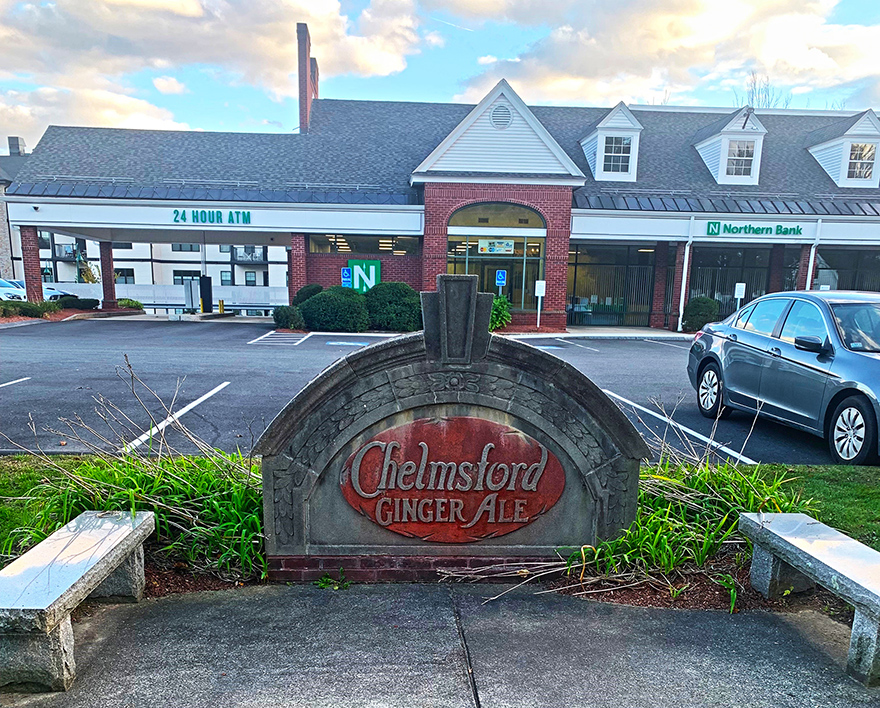
Ready hopes the limited but passionate customer base keeps buying bottles so Chelmsford Golden Ginger Ale stays on the shelves. Even the Polar formula is better than nothing. “It’s a very niche product and we need to keep it going," Ready said. “How many towns have a ginger ale named after them?"
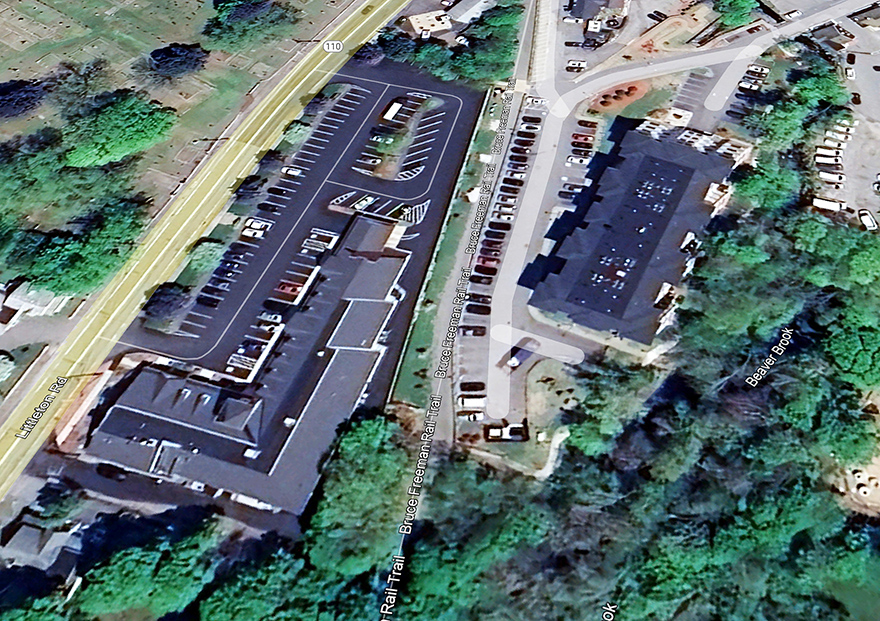
- All photos labeled (colorized) are black and white images edited by Fred Merriam
- Book, Arcadia Publishing, 2014, "Images of America, Chelmsford Revisited" by Fred Merriam
- Book, Courier Printing, 2011, "History of Chelmsford 1910-1970" by Eleanor Parkhurst and Fred Merriam
- Book, Courier-Citizen, 1917, "History of Chelmsford Massachusetts" by Rev Wilson Waters
- Cemetery Records, Town of Chelmsford
- Deeds, Middlesex North Registry, various documents, as listed
- Newspaper, "Boston Sunday Globe," as credited
- Newspaper, "Lowell Courier-Citizen," as credited
- Newspaper, "The Lowell Sun," as credited
- Photo collection, Bernie Ready, Chelmsford
- Photo collection, Chelmsford Historical Society
- Photo collection, Chelmsford Water District
- Photo collection, Claire Barrett, Chelmsford
- Photo collection, Fred Merriam, Chelmsford
- Photo collection, Jeff MacRae, Chelmsford
- Photo collection, Linda Prescott, Chelmsford
- Photo collection, Robert Fahey, Chelmsford
- Photo collection, Sandra Spence, Chelmsford
- Search Utility, Microsoft Copilot
- Website, Boston.com
- Website, Chelmsford Historical Commission, History-Businesses-Littleton_28.pdf
- Website, Chelmsford Historical Society, Media-Directories page
- Website, Google Earth Pro
- Website, WorthPoint.com